
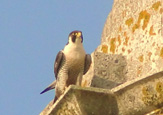
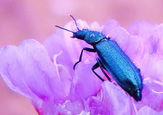
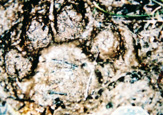
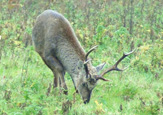
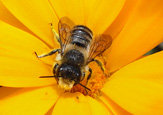
My Big Cat Research - Page 1 of 5
Ten years ago I decided to take on the subject seriously whether I incorporated it within my normal natural history studies or not. The truth is that field signs showed themselves up whenever I was in the field. It took a long time learning how to tell the difference between the fox, badger and some dog from cat signs, especially droppings and to a certain extent footprints. Animal carcasses or remains of either predated or scavenged were less tricky. sussing out the particular species of cat responsible for any such sign was very tricky, and still is, although knowing a bit about where certain species habitually leave signs, one can be pretty sure, along with knowledge gained about the species and interactions with other species or members of the same species.
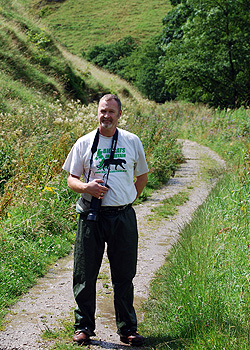 I first looked at hundreds of alleged sightings by people, and any photos or video footage etc then looked at the map and overlaid lots of relevant information from a large cats point of view, these included everything from geology, altitude, botany, forestry, farming, human recreation, hunting and shooting, fishing, dog walking, roads, minor and major, rivers lakes and any watercourses including ponds and small drains and also, areas of cover in any way. Public footpaths and bridal way's railway lines used or disused and built up areas of human habitation, also parkland in the many forms. All these things can have a bearing on the research.
I first looked at hundreds of alleged sightings by people, and any photos or video footage etc then looked at the map and overlaid lots of relevant information from a large cats point of view, these included everything from geology, altitude, botany, forestry, farming, human recreation, hunting and shooting, fishing, dog walking, roads, minor and major, rivers lakes and any watercourses including ponds and small drains and also, areas of cover in any way. Public footpaths and bridal way's railway lines used or disused and built up areas of human habitation, also parkland in the many forms. All these things can have a bearing on the research.
Most important of all was obviously food. So overlaid charts of all kinds of wild animals and birds were scrutinised in a bid to start assessing what would be the more likely of a particular situation, especially regarding territories. I obviously had to do the field work in the places I could, and coupled with much field signs from the cats, I was able to suss out some possible territories. Some of these possibilities started to border on reality, the more research I did; though nothing seemed as clear cut as I first envisaged.I first realised that most cat sightings were in areas of large amounts of forest, the more remote from human habitations the more likely.
The more biodiversity in a specific area also add to it. Biodiversity in Dorset means chalk down land, or heathland, or none intensive farming with many broad leaved woodlands around. The main ingredient was deer.
In Dorset we have huge wild herds of sika deer as well as many roe and a few herds of fallow. It is likely that the sheer numbers of deer in the southern part of the county have something to do with the fact that there are so many reports. This is south Dorset. There is so much wildlife here; I imagine it must be one of the most bio diverse areas in Great Britain.
I am finding so much field evidence, most of it by accident whilst watching deer or reptiles on the heath. There always seems to be big cats in these areas. If one cat moves out for whatever reason, another will take its place. There is without doubt breeding going on, and cubs have been seen over a period of several years which means at least two different litters, leopard cubs stay with the mother for up to two years. I have seen leopard cubs in south Dorset as well as in the north east of the county. I have seen puma cubs though on one of the heaths, in the same area in which at least one leopard regularly patrols.
There could be lynx here and I have had credible reports. Additionally there are certainly lynx in north east Dorset and the New Forest. There is some sort of smaller cat around Poole Harbour. The habitat is suitable for jungle cat. Wareham forest and Purbeck areas have had reports for decades, and I am not surprised as there is a variety of habitats including heathland, coniferous and deciduous forest hills chalk downland, rocky slopes, many quarries coast and a very large natural harbour (the biggest in Europe and one of the biggest in the world), vast reed beds, vast rhododendron scrub, and much typical dairy farmland and fallow field areas. There is much water and thick gorse scrub as well as vast bracken beds.